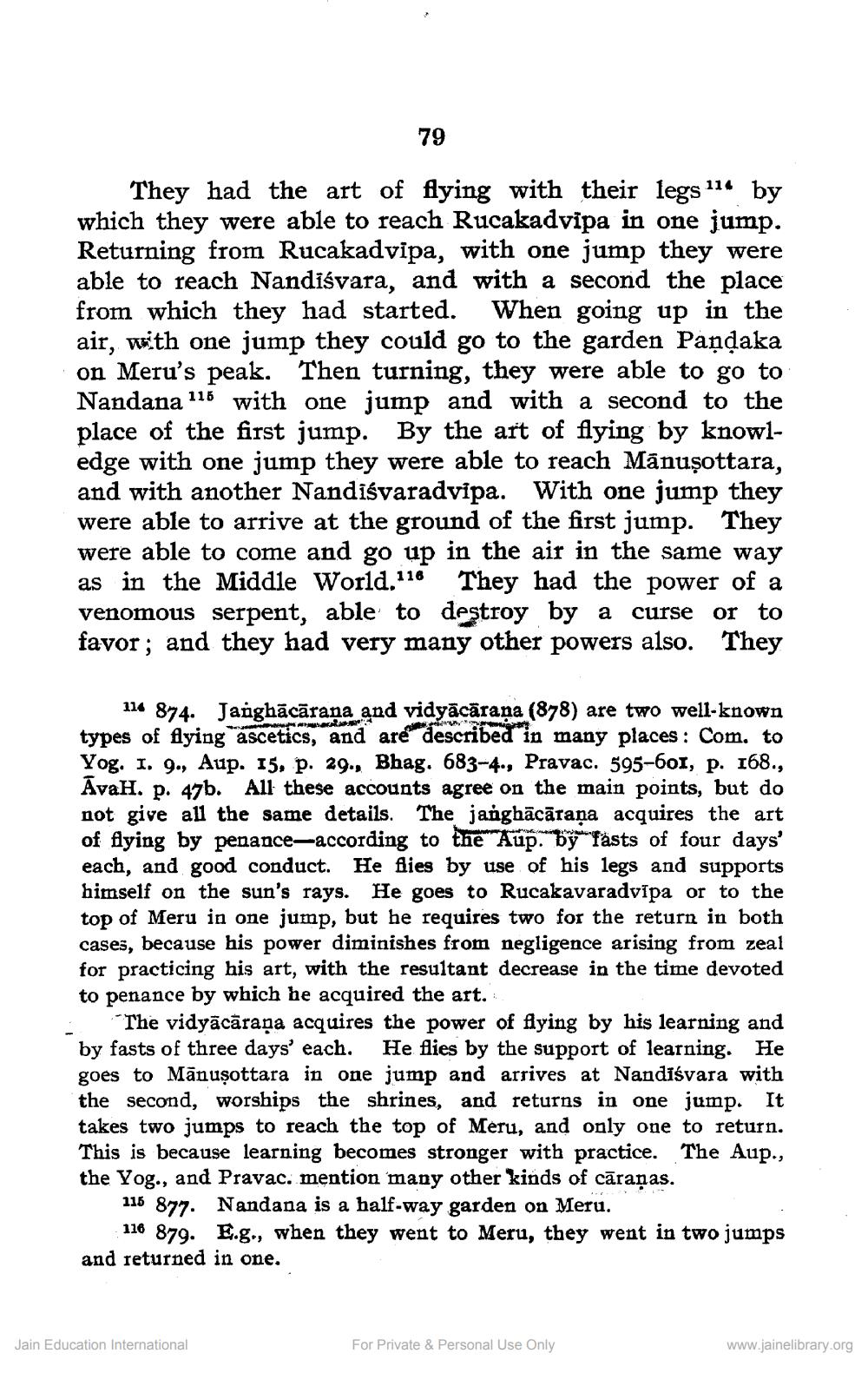________________
They had the art of flying with their legs 114 by which they were able to reach Rucakadvipa in one jump. Returning from Rucakadvipa, with one jump they were able to reach Nandiśvara, and with a second the place from which they had started. When going up in the air, with one jump they could go to the garden Pandaka on Meru's peak. Then turning, they were able to go to Nandana 116 with one jump and with a second to the place of the first jump. By the art of flying by knowledge with one jump they were able to reach Mânuşottara, and with another Nandiśvaradvipa. With one jump they were able to arrive at the ground of the first jump. They were able to come and go up in the air in the same way as in the Middle World.116 They had the power of a venomous serpent, able to destroy by a curse or to favor; and they had very many other powers also. They
M
er
116 874. Janghācārana and vidyācāraṇa (878) are two well-known types of flying ascetics, and are described in many places : Com. to Yog. I. 9., Aup. 15. p. 29., Bhag. 683-4., Pravac. 595-601, p. 168., Aval. p. 475. All these accounts agree on the main points, but do not give all the same details. The janghācāraṇa acquires the art of flying by penance-according to the Aup. by Fasts of four days' each, and good conduct. He flies by use of his legs and supports himself on the sun's rays. He goes to Rucakavaradvipa or to the top of Meru in one jump, but he requires two for the return in both cases, because his power diminishes from negligence arising from zeal for practicing his art, with the resultant decrease in the time devoted to penance by which he acquired the art.
"The vidyācāraṇa acquires the power of flying by his learning and by fasts of three days' each. He flies by the support of learning. He goes to Mānuşottara in one jump and arrives at Nandiśvara with the second, worships the shrines, and returns in one jump. It takes two jumps to reach the top of Meru, and only one to return. This is because learning becomes stronger with practice. The Aup., the Yog., and Pravac, mention many other kinds of cāraņas.
115 877. Nandana is a half-way garden on Meru.
116 879. E.g., when they went to Meru, they went in two jumps and returned in one.
Jain Education International
For Private & Personal Use Only
www.jainelibrary.org




